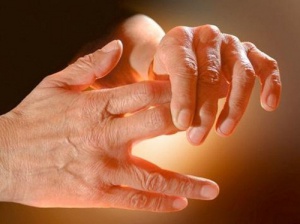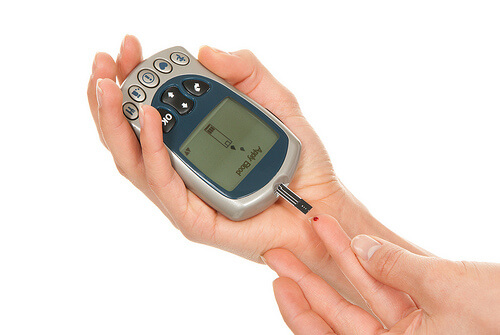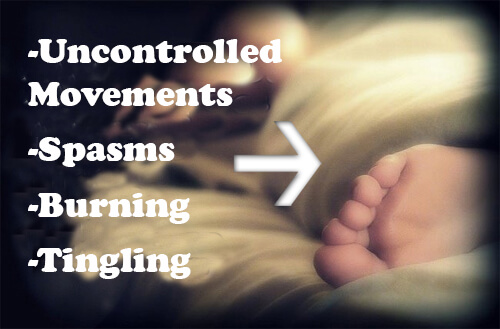Causes of Tingling in Hands and Feet

Tingling in hands and feet is an abnormal sensation that isn’t only uncomfortable. It’s also a cause for concern if you don’t know what’s causing it. Although tingling usually happens in different areas of the body, it’s most common in the hands, feet, arms or legs.
At first, you can ignore it; but when you experience it frequently and for no apparent reason, this could indicate something isn’t functioning correctly in your body. It may be a symptom of certain illnesses.
Tingling in hands and feet could be a symptom of a minor infection, but it could also indicate you’re suffering from an illness that requires more attention.
That’s why it’s important to go see a doctor if you frequently experience tingling. Below, we’ll list a few of the common illnesses associated with tingling in hands and feet.
Hypoesthesia
Tingling in hands and feet could be one of the symptoms for hypoesthesia, a loss of sensitivity that accompanies this annoying sensation. If you have these two symptoms, you must be very careful, because this could be more than just a fleeting pain.
Circulatory problem

If the tingling problem increases and becomes somewhat constant, this could mean that something more severe is taking place. In that case, it’s best to visit a doctor.
Buerger’s disease
Smoking could cause this disease; it initially shows up as pain caused by a lack of blood flow to the hands and feet, know as claudication. The individual feels a constant tingling and numbness in the hands, followed by the fingers and toes. This case is fairly delicate and if left untreated, it can cause gangrene.
Diabetes

Diabetes is one of the most common diseases nowadays, and it happens when blood sugar levels increase. Tingling in hands and feet is a typical symptom of this disease, as it can cause insufficient blood flow that could later make the individual feel this annoying sensation in their legs as well.
This symptom could also indicate ulcers, which you should treat in time to prevent the formation of gangrene.
Read also:
7 Clues for Detecting Diabetes Early
Multiple Sclerosis
Numbness and tingling in hands and feet are one of the first symptoms that show up in individuals who suffer from multiple sclerosis. This disease could also include a burning sensation and an increased sensitivity.
These types of sensations are produced by insufficient blood flow to the affected areas and problems with the nervous system.
Acute inflammatory demyelinating polyneuropathy
Acute inflammatory demyelinating polyneuropathy or AIDP, is one of the less common and fairly rare diseases that prevents the nerves from sending signals to muscles throughout the body.
Tingling is a symptom of this disease, generally appearing in the feet and legs. Although as time goes on, this may also extend to the arms and hands.
Restless leg syndrome

Tingling in hands and feet that happens mostly at night is also related with a condition called restless leg syndrome. This is one of its most common symptoms, but it’s not the only one.
Individuals who suffer from it can also feel pain, cramps and itching, accompanied by insomnia problems, as these symptoms typically get worse at night. Anemia, kidney failure, or peripheral neuropathy could cause this syndrome. But no exact cause is known.
Others causes of tingling in hands and legs…
- Sitting or standing in the same position for prolonged periods of time.
- Nerve damage.
- Pressure on spinal nerves caused by a herniated disc.
- Having abnormal levels of calcium, potassium, or sodium in the body.
- Lack of vitamins, primarily vitamin B12.
- Consuming alcoholic drinks and/or tobacco, as the lead generally damages nerves.
- Animal bites.
- Bites from insects, ticks, mites and spiders.
- Using certain medications.
All cited sources were thoroughly reviewed by our team to ensure their quality, reliability, currency, and validity. The bibliography of this article was considered reliable and of academic or scientific accuracy.
- Marks, P. W., Ph, D., & Zukerberg, L. R. (2004). Case 30-2004 : A 37-Year-Old Woman with Paresthesias of the Arms and Legs. The New England Journal of Medicine.
- Hagmar, L., Törnqvist, M., Nordander, C., Rosén, I., Bruze, M., Kautiainen, A., … Axmon, A. (2001). Health effects of occupational exposure to acrylamide using hemoglobin adducts as biomarkers of internal dose. Scandinavian Journal of Work, Environment and Health. https://doi.org/10.5271/sjweh.608
- Z., V. (2010). The sensory symptoms of distal diabetic polyneuropathy. European Journal of Pain Supplements.
This text is provided for informational purposes only and does not replace consultation with a professional. If in doubt, consult your specialist.








